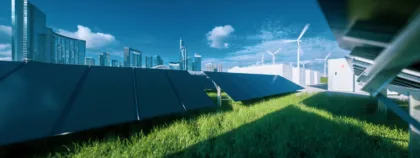Puerto Rico’s path to a fully renewable energy future just took a major turn. On May 21, 2025, the Puerto Rico Energy Bureau (PREB) issued a clarification to its March resolution under Case No. NEPR-MI-2025-0001. This update redefines how the island will approach energy procurement, grid stability, and its ambitious goal of reaching 100% renewable energy by 2050 under the recently enacted Act 1-2025.
The resolution underscores Puerto Rico’s commitment to energy transformation, balancing innovation, sustainability, and resilience. For energy stakeholders, businesses, and consumers, understanding this regulatory shift is critical.
Act 1-2025: A Shift in Focus, Not in Goals
Act 1-2025 modifies the trajectory toward a green future by removing interim benchmarks, previously set at 40% renewable energy by 2025 and 60% by 2040. While these short-term targets are no longer mandated, the law maintains the long-term vision of achieving 100% renewable energy generation by 2050.
This shift gives regulators and market players more flexibility, but it also increases the urgency to modernize Puerto Rico’s grid and ensure the reliability of future generation sources.
Firm Capacity Over Baseload: A Strategic Redefinition
One of the most impactful clarifications from the Energy Bureau is the emphasis on procuring firm capacity rather than traditional baseload energy.
Firm capacity is defined not by constant generation, but by a system’s ability to dispatch energy when it’s needed most, specifically during peak hours. For example, a solar-plus-storage system that can power the grid from 6:00 PM to 10:00 PM meets this new standard.
This change prioritizes flexibility and performance over outdated models that heavily favored fossil-based baseload generation, opening the door for a competitive, technology-agnostic procurement process.
The Call for 2,500–3,000 MW: Technology-Neutral Procurement
To meet growing demand and replace PREPA’s aging thermal assets, the Bureau has called for the immediate procurement of 2,500–3,000 megawatts of firm, dispatchable capacity. This includes:
- Renewable energy with storage (e.g., solar + battery)
- Standalone battery systems
- Advanced thermal technologies
RFPs will prioritize projects that are:
- ≤400 MW per unit
- Located near load centers
- Compatible with renewable integration
- Cost-effective and reliable
Failure to comply with PREB’s procurement orders may result in daily fines up to $125,000, further highlighting the urgency and seriousness of this transition.
Smart Inverters and Net Metering: The Debate Intensifies
While the Bureau’s resolution aims to bolster reliability, other conversations in the energy space are raising concerns—especially for Puerto Rico’s growing community of prosumers (residents who produce and export solar energy).
LUMA Energy has proposed limitations on how much energy prosumers can export to the grid, citing concerns about voltage instability caused by excessive energy injection into aging transformers. Their solution? The activation of “smart inverter” features like Volt-Watt and Volt-Var, which automatically throttle energy output based on grid conditions.
LUMA’s proposal would impact systems installed since 2018 and could significantly reduce monthly net metering credits for consumers, sparking backlash from solar advocates and industry groups.
Public-Private Partnerships and the Role of the IRP
The long-term roadmap for Puerto Rico’s energy system continues to be shaped by the Integrated Resource Plan (IRP), a 20-year strategic framework overseen by the Bureau. The IRP process considers not only generation and demand but also energy efficiency, distributed resources, and customer participation.
Through Acts 120-2018 and 29-2009, the Government of Puerto Rico has established a legal framework for Public-Private Partnerships (P3s) in energy development. These partnerships aim to inject capital, manage risk, and accelerate infrastructure upgrades without compromising public ownership of key assets.
As the IRP evolves in response to Act 1-2025 and new procurement rounds, collaboration between PREB, LUMA, independent producers, and regulators will be essential to deliver a modern, reliable, and equitable energy future.
A New Day for Energy in Puerto Rico
This latest clarification from the Puerto Rico Energy Bureau reflects a thoughtful and ambitious strategy to:
- Diversify energy sources
- Modernize infrastructure
- Ensure peak-hour reliability
- Incentivize technological innovation
With aggressive procurement targets and a firm redefinition of dispatchable capacity, Puerto Rico is not just moving toward renewables,it’s reengineering the entire energy landscape.
Connect with a Trusted Advisor
For businesses, developers, and stakeholders navigating this evolving landscape, it’s essential to stay ahead of the regulatory curve.
If you have questions about how these developments impact your projects or operations, we encourage you to contact Eidalia González-Tosado, Senior Member at Ferraiuoli. With deep expertise in environmental law, energy regulation, land use, and commercial real estate, Eidalia provides strategic legal counsel to developers, investors, and stakeholders shaping the future of Puerto Rico’s energy sector.



